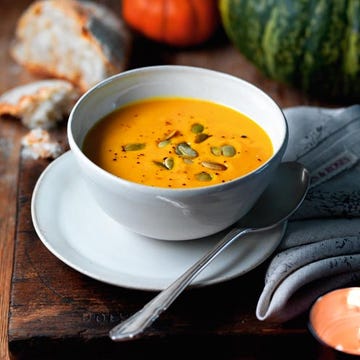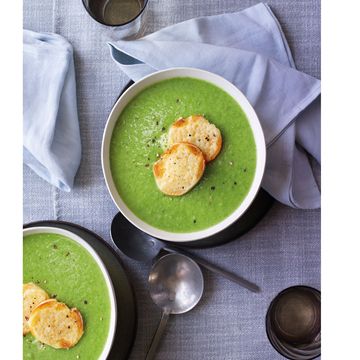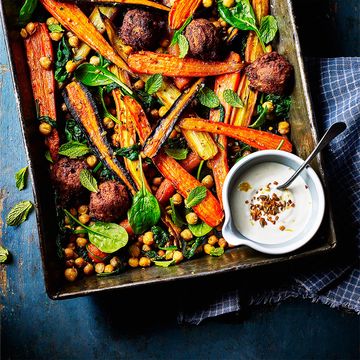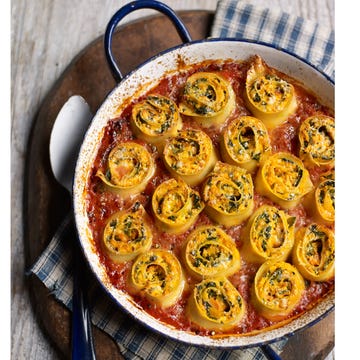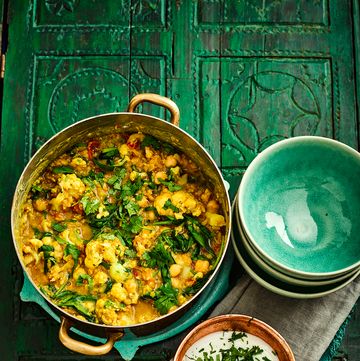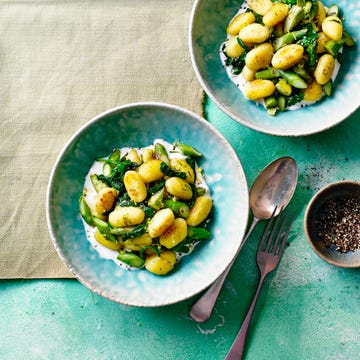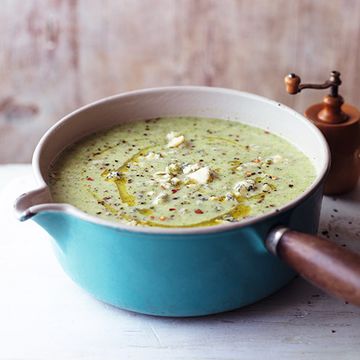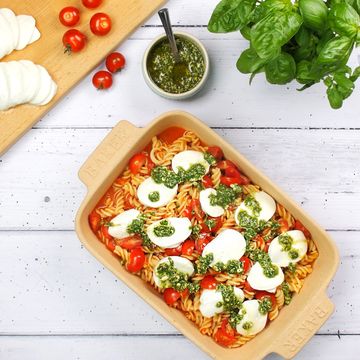Advertisement - Continue Reading Below
For the filling
10 level tbsp basil leaves, plus extra to garnish
2 level tbsp parsley leaves
3 level tsp lemon thyme leaves
3 x 150 g tubs soft goat's cheese
1 medium egg
- 75 g
(3oz) finely grated Parmesan
- Step 1
Put the flour on a work surface and make a hollow in the centre. Add five eggs, 1tbsp oil and a generous pinch of salt. Whisk the eggs together with a fork and gradually mix in the flour to make a stiff paste. Knead in the flour and make a dough.
- Step 2
Scrape off the flour left on the surface, then sieve it back on to the dough. Knead in as much of this flour as possible to make a stiff texture, then knead without flour for 10min. Put on a board, cover with a bowl and leave for 30min-1hr.
- Step 3
Now make the filling: chop 5 level tbsp basil, the parsley and lemon thyme (a mezzaluna is ideal for doing this as the rolling action of the sharp blade cuts finely through the leaves without bruising them).
- Step 4
Beat together goat's cheese and egg, then fold in the herbs and Parmesan. Season. Cover and chill. Divide dough into four pieces and shape each piece into a rectangle. (If dough feels sticky during the next step, dust with semolina flour.)
- Step 5
Roll one piece through pasta machine on thickest setting. Fold in three, insert open end and roll through. Repeat twice. Roll dough through settings. Cut in two. Dust surface with semolina flour; lay dough on top; cover with damp cloth.
- Step 6
Repeat with other rectangles. Dust surface again with semolina flour. Brush one sheet of pasta with beaten egg. Top with heaped teaspoons of the filling, set 1cm (1⁄2in) apart. Cover with a second sheet. Repeat with the remaining sheets and filling.
- Step 7
Starting from the middle, use your finger to press gently down around the mounds of goat's cheese and herb filling to remove any air that's been trapped inside. Repeat with the remaining pasta.
- Step 8
Cut around each mound with a pastry wheel. Repeat with remaining pasta and filling. Put ravioli on trays dusted heavily with semolina flour and leave for 30min to dry out. Don't chill or pasta will become sticky.
- Step 9
Bring a large pan of water to the boil, add 1 level tbsp salt and ravioli and cook for 6min. Drain. Chop remaining basil leaves, mix with 6tbsp oil and season. Pour over ravioli, garnish with basil and serve.
Like this? You’ll love…
29 delicious vegetarian recipes
Vegan carrot cake
Vegan chocolate cake
The best vegan recipes
Make pasta by hand
For best results, use a pasta machine.
The freshness of the flour, the size of the eggs and the temperature in your kitchen all affect how much flour will be absorbed when kneading. So make pasta by hand, as it's only by touching that you can feel how much more flour needs to be taken in.
Cut any leftover dough into ribbons. Leave to dry in a cool place overnight. Cook as in step 9 and serve with a tomato sauce.
Per Serving:
- Calories: 690
- Total carbs: 65 g
- Total fat: 36 g

A crack team of highly skilled food content producers, the GH Kitchen Team are Good Housekeeping’s resident recipe developers and all-round food obsessives. GH Kitchen Director Sarah Akhurst is our resident hosting pro and loves nothing more than putting on a foodie feast for friends. Senior Cookery Writer Alice Shields is a former pastry chef and baking fanatic who loves making bread and would have peanut butter with everything if she could. Lover of all things savoury, Senior Cookery Writer Grace Evans can be found eating nocellara olives at every opportunity, and will take the cheeseboard over dessert any time. With a wealth of professional kitchen experience between them, they’re dedicated to ensuring every Good Housekeeping recipe is the best it can be, so you can trust they’ll work every single time.


